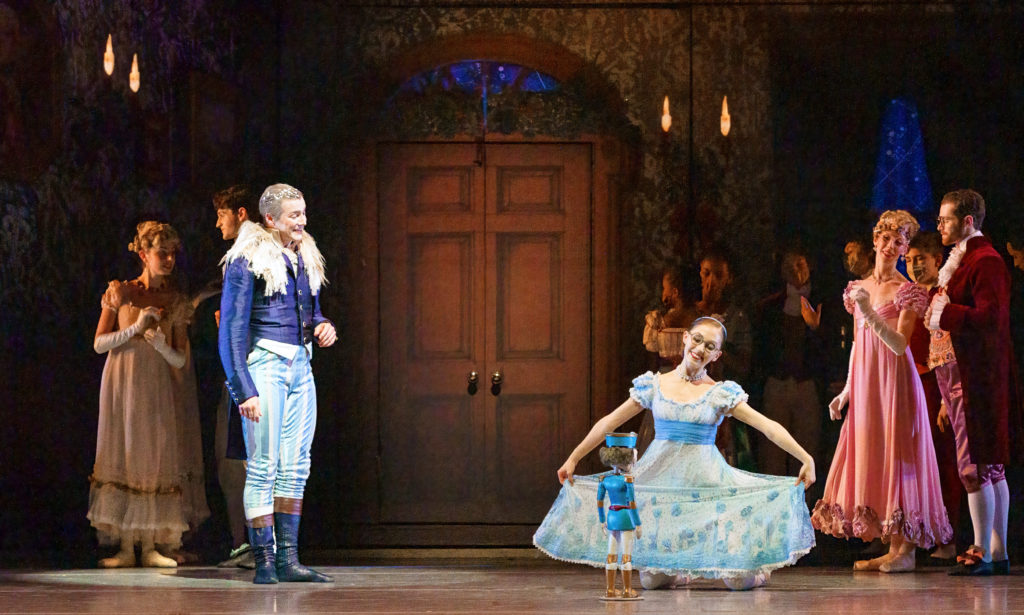Atlanta Ballet Strikes Apprentice Program in Move Toward Pay Equity
Ask any dancer what it’s like to transition from school to a full-time paid position in an upper-tier ballet company, and they’ll likely say that crossing the gap between student and professional can be precarious.
This is especially true in the U.S., where companies often require dancers to enter as low-paid apprentices, dependent on family or other outside income sources.
As of August 2022, Atlanta Ballet has eliminated its apprentice level. Going forward, entry-level dancers who pass the main company audition will start as full company members, earning entry-level pay based on a collective-bargaining-agreement scale, with salary increases over three years. Last season’s roster of 39 company members, six of whom were apprentices, now comprises 40 company dancers and no apprentices.
The decision comes at a time when ballet companies are seeking to increase racial equity, recruit top-level Black and brown dancers, and create more access for members of underrepresented communities to train for and enter the profession.
Tom West, executive director of Atlanta Ballet since September 2021, initiated the move last April after seeing a line item on the pay scale that didn’t make sense to him: less than $500 per week for apprentices. West, a relative outsider to the ballet field, said to fellow company leaders, “Can we agree that that’s just not right?”
West believes the low pay creates a barrier that disproportionately affects dancers from underrepresented communities—the very dancers Atlanta Ballet seeks to train through its Decade 2 Dance scholarship program and attract to its company.
“Once someone has gone through a decade of training,” says West, “we say, ‘Oh, wait—two more years. And we’re going to pay you a little bit, but not enough to live on.’ You’re not a student. You’re, professional-ish.”
This sends a message to the Atlanta Ballet Centre for Dance Education’s graduating dancers that a ballet career offers neither a living wage nor a financially secure future. At this inflection point, many choose college and more lucrative career paths.
Apprentice programs are easy on company budgets, but are hard on young dancers eager to prove themselves. Atlanta Ballet dancer Ashley Wegmann, who is one of the American Guild of Musical Artists (AGMA) delegates for Atlanta Ballet company dancers, says that apprentices without outside financial support usually work second jobs and triple up in apartments to make ends meet.

At the same time, they face intense physical demands, taking responsibility for their own roles while also covering for other dancers. And after two years of striving to be noticed, there’s no guarantee that the company will have a full position for them.
During the past two decades, most U.S. ballet institutions have created trainee programs or second companies to transition students to professional levels. These junior programs vary considerably in terms of organizational structure and pay—some are tuition-based or unpaid, while others offer a stipend or small salary. Atlanta Ballet 2, for example, provides students with stipends and dance footwear, as well as opportunities to train, dance in their own productions and perform corps and ensemble roles with Atlanta Ballet.
But most companies have also kept the apprentice tier, so dancers may go through four or more years of low or no-paying positions before they can begin to earn a living.
Atlanta Ballet aims to change that. Now, first-year company members earn a base pay of $700 per week for 36 weeks. This increases incrementally so that by the third year, dancers earn $1,000 per week for 36 weeks, with annual contracts governed by a collective-bargaining agreement between AGMA and Atlanta Ballet.
Previously, Atlanta Ballet apprentices could only be considered for specific types of roles, such as those in the corps de ballet or ensemble. Now, all members of the non-ranked company can audition for all roles, a move West hopes will create a more inclusive environment.
Atlanta Ballet joins a short list of AGMA dance companies without an apprentice rank. Allison Beck, Mid-Atlantic Counsel for AGMA, hopes more organizations “will follow suit, given that the elimination of substandard apprenticeship wage rates is essential if ballet hopes to remain a relevant and welcoming art form.”
In 2018 Atlanta Ballet joined The Equity Project: Increasing the Presence of Blacks in Ballet, an initiative led by Dance Theatre of Harlem, The International Association of Blacks in Dance and Dance/USA. Since then, the company has strived to create a more inclusive work environment. Students, teachers and administrative staff have grown increasingly diverse, and the hiring of Claudia Schreier as choreographer in residence has been a notable success. But the company’s inability to attract and retain more than a few African American dancers has made it difficult to produce works that reflect and resonate with Atlanta’s population, which is about 50 percent Black.
West hopes to change the minds of skeptics in the local community who, in 2020, called out Atlanta Ballet’s dearth of African American dancers, claiming that the company’s diversity pledges were insincere.
“What we’re doing right now is looking thoughtfully, in part with fresh eyes, but with very open hearts,” says West. “All I can do is take action steps that I believe are right,” he says.
“Over time, the community will decide whether we mean it or not,” says West. “For us, the proof has to be in the work.”





